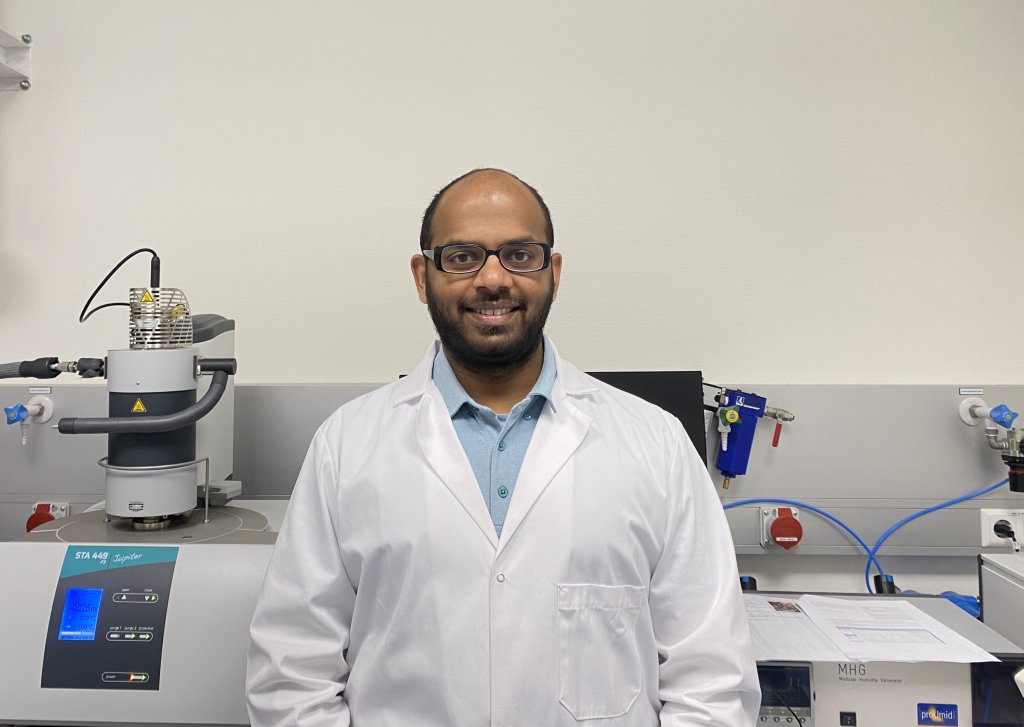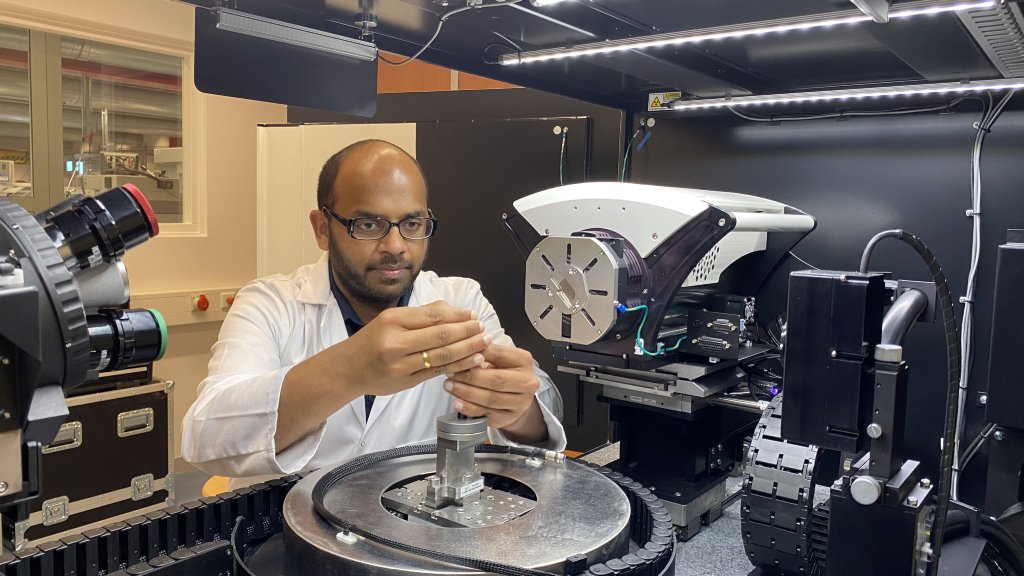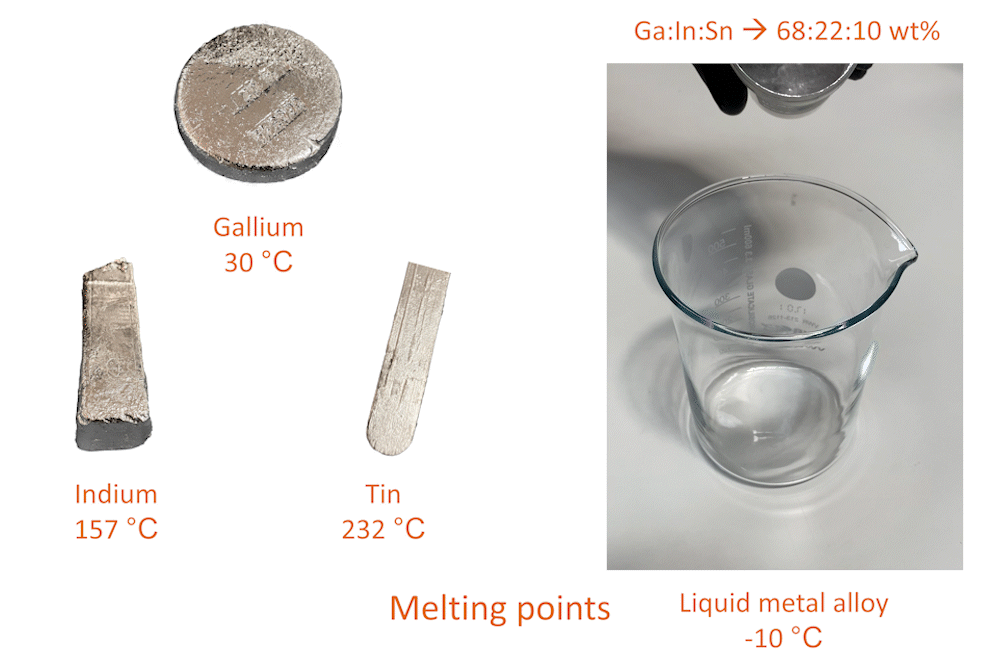Energizer Keerthivasan Rajamani
Keerthivasan Rajamani is from India and recently obtained his PhD in thermal engineering at the University of Twente, after obtaining his MSc degree at Delft University of Technology in mechanical engineering, specifically energy technology.
During the 4TU.Energy Community Day in March 2023, Keerthi won the Best Pitch Award. With the same ease and enthusiasm as then, he talks about his research.
How magnetocaloric refrigeration can contribute to the energy transition
Keerthi explains: “One fifth of the worldwide energy consumption is for cooling and warming of spaces, offices, buildings, homes, etc. Vapor compression refrigeration system is the predominant technology used, which is very robust and affordable. The limitation is, even if you take the best refrigerator, it's efficiency is less than 50% of Carnot efficiency*. Energy losses are high. Although refrigerator systems are very versatile nowadays, it has reached its limits in developing the technology further.” Therefore, Keerthi looked at other options and found his main interest in magnetocaloric refrigeration.
This technology is 10 to 20% more energy efficient than an equal vapor compression refrigeration system. This speaks to Keerthi’s interest in energy efficiency. Secondly, what is appealing to this technology is that the materials, which although have to be mined, has potential to be more eco-friendly. Thirdly, magnetocaloric refrigeration uses solid materials, rather than the liquids that fridges use nowadays, which can evaporate and escape into the atmosphere.
A more sustainable way of cooling and heating
Keerthi: “The fundamental principle is that there are certain materials which heat up when you put them close to a magnet. The magnetic field that you apply in this situation changes the internal state of the material, releasing heat. When you remove the magnet, it cools down. That is to say, when the magnetic field is removed, the material starts to get back to its original state and reabsorbs the heat, causing the surrounding temperature to drop. We can manipulate the interaction between the magnetocaloric material and the magnetic field to achieve refrigeration.”
Magnetocaloric refrigeration can be regarded as an emerging technology for room temperature applications, but has already been used in cryogenic applications since the 1920s. The first magnetocaloric refrigerator working at room temperature was built by G.V. Brown in 1976. In later years, new discoveries in magnetocaloric materials were made and since then, the technology has gained momentum. Keerthi: “Gadolinium is the naturally occurring magnetocaloric material suitable for room temperature applications. Due to its restriction in accessibility, the research community is considering other options of which MnFePSi (actively researched at TU Delft) and LaFeMnSiH alloys are promising.

Redesigning the refrigeration system
“As a mechanical engineer, I try to elegantly solve the quest for a refrigeration system which is without moving parts (optimal maintenance) and one that obtains the best conversion efficiency.
This is very ambitious, because it means we have to replace two components: the mechanical pump and a moving device for the magnets. At this moment we are not able to do this both. Therefore, I am currently working on the idea to replace one moving component at a time. First is the mechanical pump. This is possible by using a magnetic heat transfer liquid along with the low-frequency magnetic pump we have developed.
A second approach is to use a mixture of magnetocaloric material and a heat transfer liquid. In this arrangement, the mixture will be moved through the stationary magnet, and therefore we could skip the moving device for the magnet.”
Let’s take a look at the approach of using the magnetocaloric mixture. Usually, water or alcohol is used as a heat transfer liquid. For this situation, Keerthi uses an alloy of gallium, indium, and tin. These three elements are solids at room temperature. However their alloy has a melting point below -10°C and therefore can be used as a heat transfer liquid, which is mixed with magnetocaloric material to obtain the mixture. The main challenge is in bridging the two approaches - using magnetic pump with magnetocaloric mixture. Such a system, which would need further research to improve its efficiency and temperature limit, will have the major advantage of having no moving parts.
While Keerthi recognizes how challenging it can be to develop the right scientific experiments and to build further scientific theory, he also met some challenges along the way, which caught him by surprise.

How a vanishing aluminium cup lead to connecting to colleagues
Keerthi: “One day, when I prepared the gallium-indium-tin liquid metal alloy, I placed a small amount of it in an aluminium crucible for a measurement. When I returned in twenty minutes, the aluminium cup had vanished, it was gone! What happened was that the liquid metal reacted with the aluminium.
This came as a great surprise to me. But I later learnt that it was a common knowledge to chemists. So I realised I needed to get myself familiarized with chemistry, which was a new discipline to me. I didn’t know where to start and which kind of questions to ask. So, I had to overcome this uncomfortable feeling of not knowing my ground and to reach out to colleagues and ask for help. However, along the way, I was able to accept these feelings and to withstand my inner critic. I am very thankful to cooperative colleagues and I would like to say to young researchers: Keep looking and you will keep finding nice people!”
Connecting with the 4TU.Energy community
When asked about the energy transition, Keerthi talks about the abundance of interesting research opportunities that rise with this transition: “It makes for an inspiring context to do your work, one in which you could really contribute to something tangible. You get to be inventive and creative. Also, it leads to very concrete cases to develop further collaboration between disciplines, such as mechanical engineering and material sciences.”
Keerthi would love to see more small-scale meetings with the 4TU.Energy community in the future. He finds getting connected with colleagues from the four universities, also when a connection is not so obvious, is really helpful to exchange experiences and brainstorm creative ideas.
Keerthi recently started as an assistant professor in the Thermal Engineering group at the University of Twente. He continues his research on magnetocaloric refrigeration, and lectures in the Hydrogen Technology course.
If you would like to get in touch with Keerthi, please visit his contact page at the University of Twente.
*Carnot efficiency: Carnot efficiency describes the maximum thermal efficiency that a heat engine can achieve as permitted by the Second Law of Thermodynamics.



